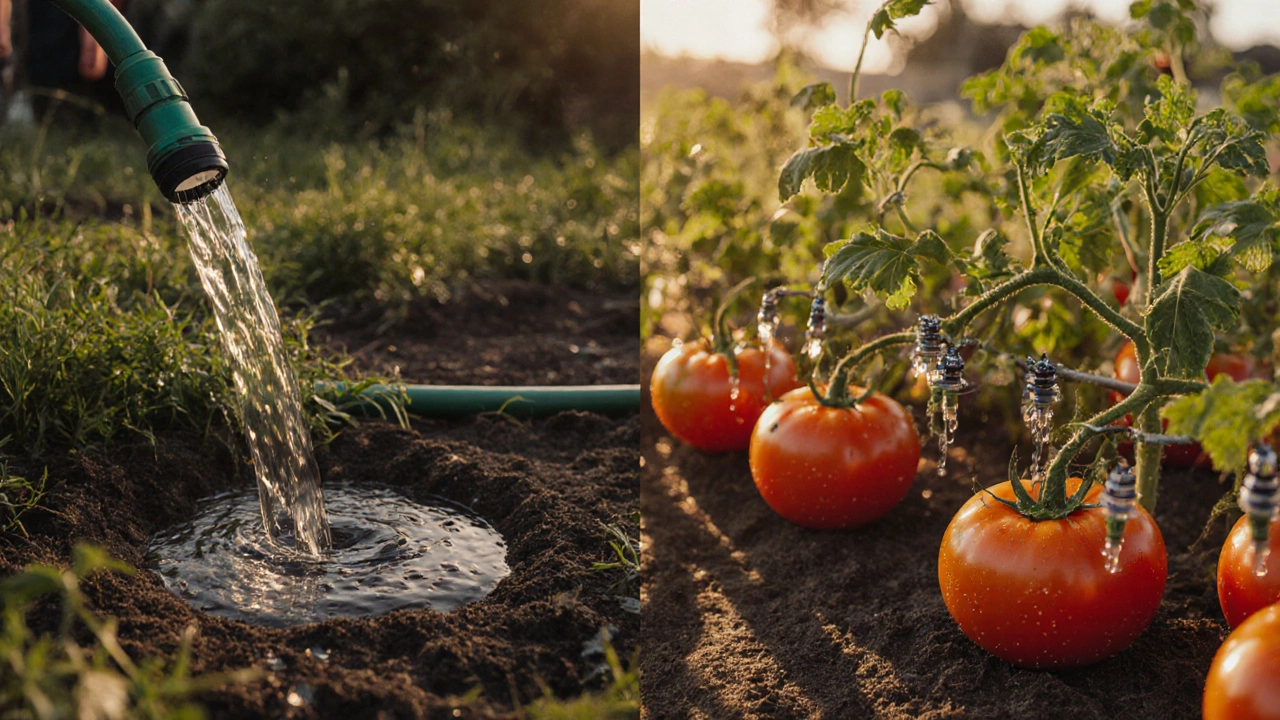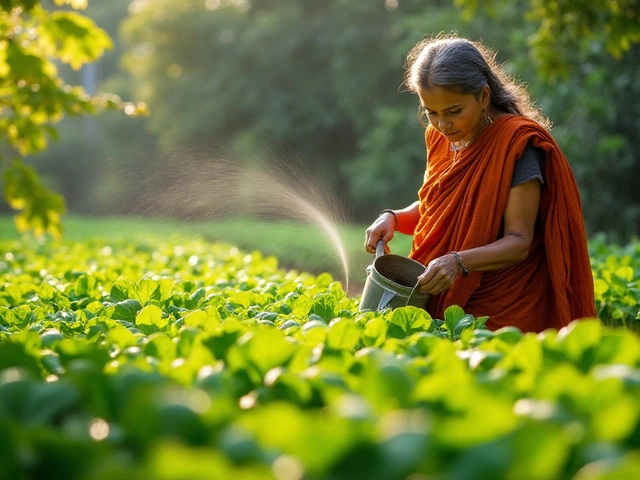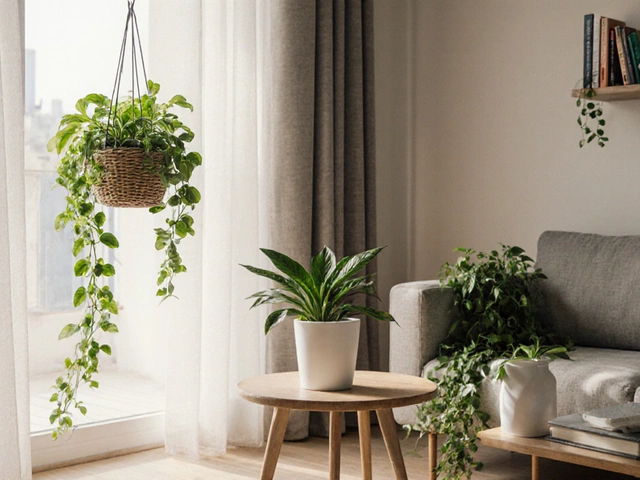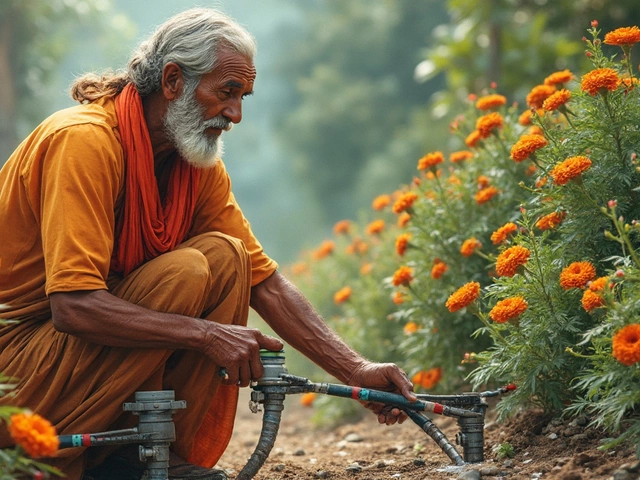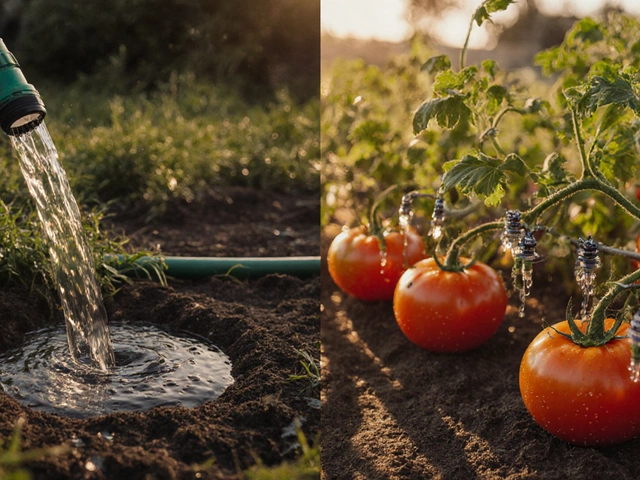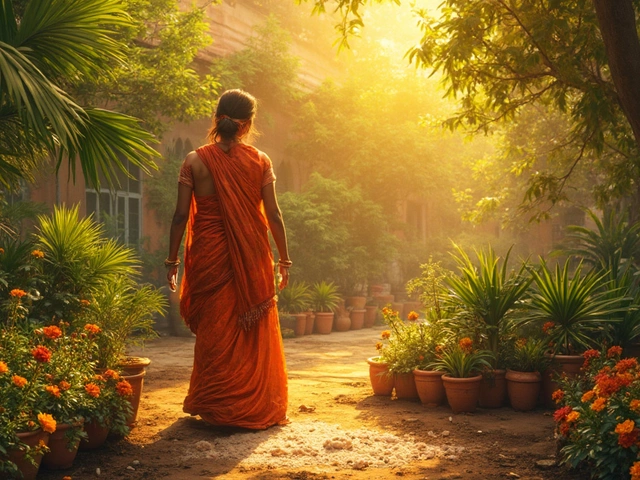Drip Irrigation Water Savings Calculator
Switching from soaker hoses to drip irrigation can save you up to 40% of your garden water usage. Estimate your potential savings below.
Your Current Water Usage
Garden Information
Every year, gardeners in Auckland waste thousands of liters of water trying to keep their plants alive with soaker hoses. They think it’s simple, cheap, and good enough. But if you’ve ever seen patches of your garden dry while others drown, or noticed mold creeping up your tomato stems, you’re not alone. The truth? drip irrigation isn’t just better-it’s the only system that actually works the way plants need it to.
How Drip Irrigation Actually Works
Drip irrigation delivers water drop by drop, right at the root zone. It uses low-pressure tubing with tiny emitters spaced every 30 to 60 centimeters. These emitters release water slowly-often just 1 to 4 liters per hour-so the soil soaks it up without runoff or evaporation. No spray. No splash. Just steady, targeted hydration.
Compare that to a soaker hose: a porous tube that leaks water along its entire length. It’s like pouring a bucket of water down a sidewalk and hoping some of it reaches the roots. It doesn’t. Most of it runs off, evaporates, or pools where it shouldn’t.
Water Savings That Actually Add Up
In 2024, a study by the Auckland Council’s Waterwise Program tracked 120 vegetable gardens over six months. Gardens using drip irrigation used 40% less water than those using soaker hoses. Why? Because drip systems only wet the soil where roots are. Soaker hoses wet everything-paths, weeds, and bare dirt-along with your plants.
That’s not just about saving money. It’s about surviving dry spells. In 2023, Auckland had its driest spring in 15 years. Gardeners with drip systems kept their crops alive. Those with soaker hoses lost nearly half their harvests to uneven watering and root rot.
Precision Matters-Plants Aren’t Random
Tomatoes don’t grow in a straight line. Carrots are spaced irregularly. Herbs cluster near the edge of the bed. Soaker hoses treat every spot the same. Drip irrigation lets you customize. You can place emitters right next to each plant. One emitter for a thirsty zucchini. One half-gallon-per-hour emitter for a sage bush. One for a row of lettuce. You control the flow, the location, and the timing.
With soaker hoses, you can’t adjust. If you need more water for your peppers, you have to turn up the whole line. That floods your onions. If you move a plant, you have to re-lay the whole hose. Drip systems snap together like LEGO. You add, remove, or reposition emitters in minutes.
Less Weeds, Less Work
Weeds grow where water lands. Soaker hoses soak the entire surface, creating perfect conditions for weeds to sprout between your rows. Drip irrigation keeps the soil surface dry. Only the root zone gets wet. That means fewer weeds, less hand-weeding, and less mulch needed to suppress growth.
In a 2023 trial at the Auckland Botanic Gardens, drip-irrigated beds had 60% fewer weeds than soaker-hose beds after just eight weeks. Gardeners spent 30% less time weeding. That’s three extra hours a week you can spend harvesting, not pulling crabgrass.
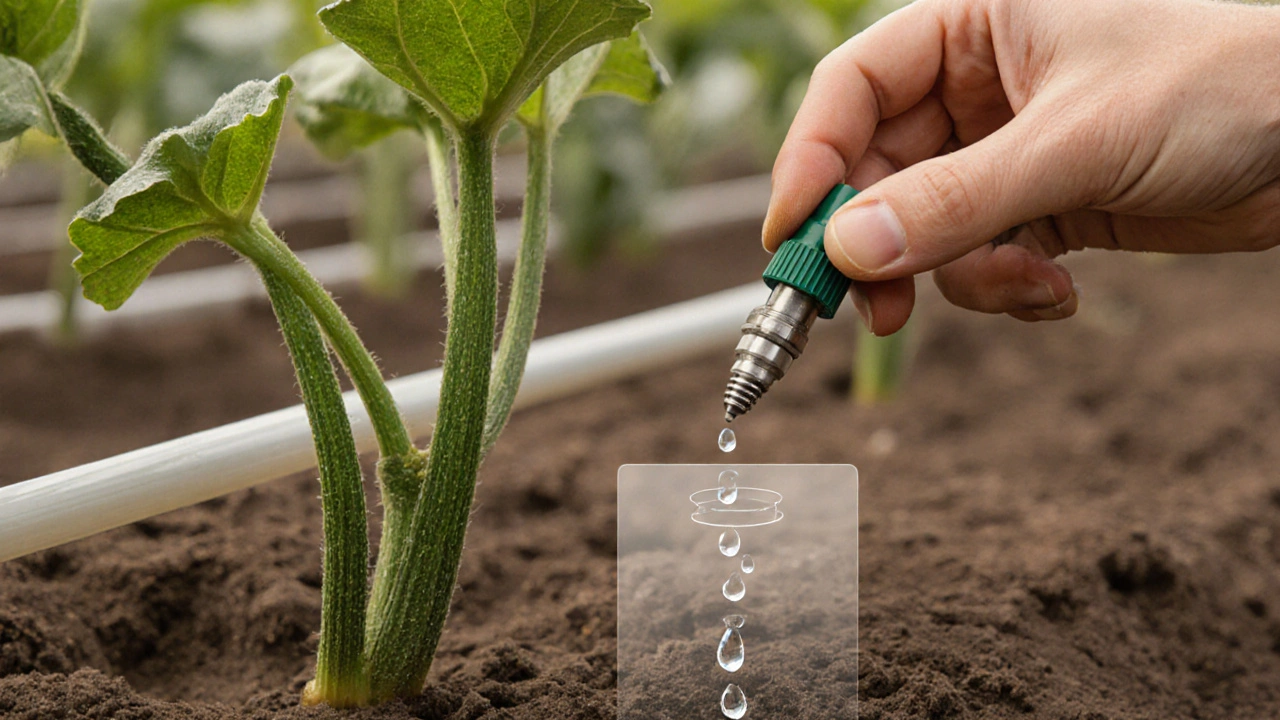
Long-Term Durability and Cost
Soaker hoses are cheap upfront-$15 for 15 meters. But they don’t last. UV exposure cracks them. Roots grow into them. Sediment clogs the pores. Most need replacing every 1 to 2 years.
Drip irrigation tubing is made of UV-stabilized polyethylene. Emitters are made of durable plastic or rubber. A well-installed system lasts 8 to 10 years. Yes, the initial cost is higher-$50 to $100 for a small vegetable garden. But you’re not buying a hose. You’re buying a system that pays for itself in water savings, reduced fertilizer waste, and better yields.
One gardener in Parnell replaced her soaker hoses with drip in 2022. She saved $210 in water bills last year alone. Her cucumber yield jumped 45%. She hasn’t bought a new hose since.
Smart Features You Can’t Get With Soaker Hoses
Drip systems work with timers, moisture sensors, and even smartphone apps. You can set your system to water at 5 a.m. every Tuesday, when evaporation is lowest. You can link it to a soil sensor that only turns on when the top 5 centimeters of soil are dry. You can even get alerts if a line breaks or an emitter clogs.
Soaker hoses? You turn on the tap and hope. No timers. No sensors. No alerts. Just guesswork.
What About Small Gardens or Containers?
Some say drip irrigation is overkill for pots or tiny balconies. But that’s where it shines. You can run a single 2-liter-per-hour emitter to a hanging tomato plant. You can loop a micro-drip line around a cluster of herbs in a window box. There are kits made for containers under $25.
Soaker hoses? They’re too long, too messy, and too hard to control in small spaces. You end up with one soggy pot and three dry ones.
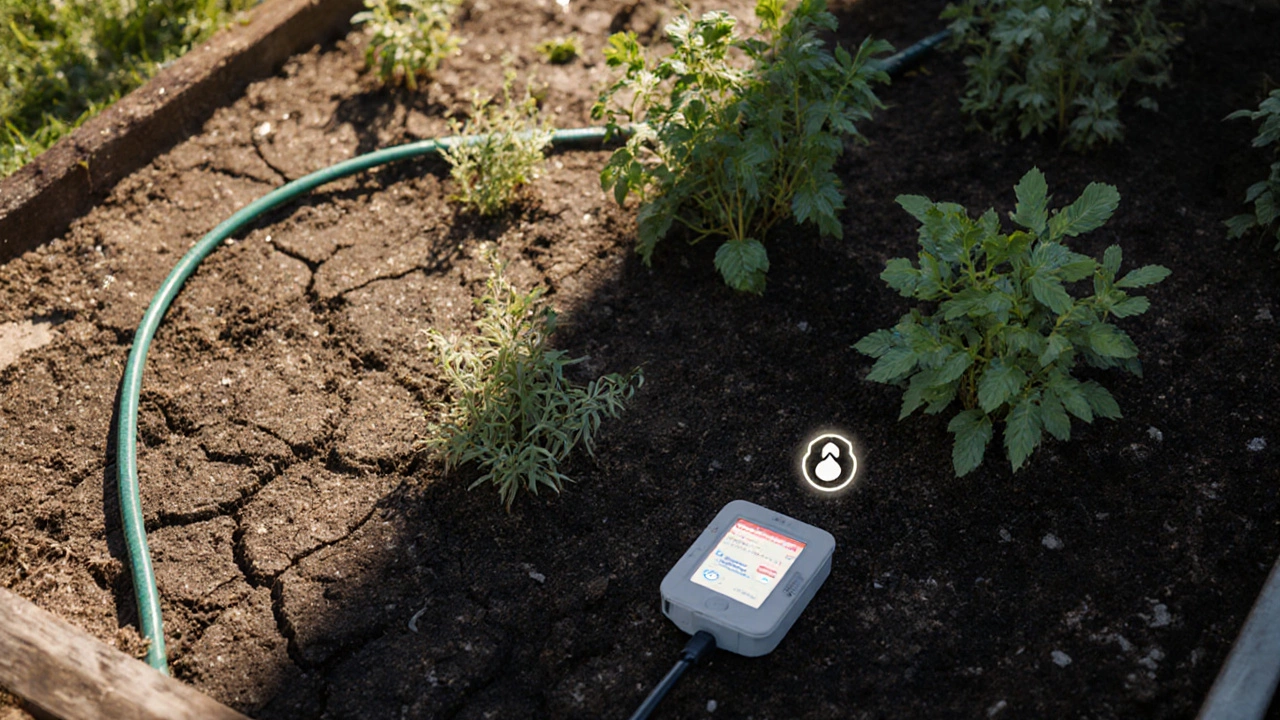
When Soaker Hoses Might Still Work
Let’s be fair. Soaker hoses aren’t useless. They’re okay for a single row of onions or a narrow flower bed where plants are evenly spaced and water needs are predictable. They’re also fine if you’re on a tight budget and only gardening for one season.
But if you care about water use, plant health, time saved, or long-term results-they’re not the answer. They’re a compromise. And in gardening, compromises cost you more than money. They cost you harvests.
Getting Started With Drip Irrigation
You don’t need to be an engineer. Start simple:
- Map your garden. Note where each plant is.
- Buy a starter kit (includes tubing, emitters, connectors, and a filter).
- Place emitters near each plant’s base-15 cm from the stem for small plants, 30 cm for larger ones.
- Use a pressure regulator and timer (even a basic $20 one makes a huge difference).
- Run it for 30 minutes, then check the soil. Adjust time or emitter flow until the top 15 cm is moist.
Most kits cost under $60. Installation takes less than two hours. You’ll wonder why you waited so long.
Final Thought: It’s Not About the Tool. It’s About the Result.
Soaker hoses feel like a fix. Drip irrigation feels like a solution. One is a temporary patch. The other is a system built for plants, not convenience.
If you want healthy plants, less work, and water bills that don’t spike every summer, drip irrigation isn’t just better-it’s the only choice that makes sense.
Can I use drip irrigation with a rainwater tank?
Yes, drip irrigation works perfectly with rainwater tanks. In fact, it’s ideal because rainwater is low-pressure, and drip systems run best at 10-20 psi. You may need a small pump if your tank is on the ground, but many gardeners in Auckland use gravity-fed systems with no pump at all. Just add a filter to catch debris from your roof.
Do drip emitters get clogged?
They can, but it’s rare if you use a good filter. Most kits include a 150-mesh filter that blocks sand and organic particles. If you’re using well water or recycled water, add a second filter. Clogs usually happen when you skip maintenance. Flush the lines once a season and check emitters monthly. A toothpick can clear most blockages.
Is drip irrigation good for clay soil?
Yes, and it’s actually better than for sandy soil. Clay holds water longer, so you need less frequent watering. Drip irrigation lets you deliver water slowly, giving clay time to absorb it without pooling. Use lower-flow emitters (1 L/h) and water for longer periods. Avoid watering daily-every 3-4 days is often enough.
Can I install drip irrigation myself?
Absolutely. Most kits are designed for DIY. You don’t need tools beyond scissors and a punch tool (often included). Just lay the tubing along your rows, punch holes where plants are, insert emitters, and connect to your faucet. It takes less than half a day for a small garden. There are free video guides from the Auckland City Council that walk you through it step by step.
How much water does drip irrigation save compared to sprinklers?
Drip irrigation uses 50-70% less water than sprinklers. Sprinklers lose up to 40% of water to evaporation and wind drift. Drip systems lose less than 5%. In Auckland’s dry summers, that’s the difference between a thriving garden and a brown one.
If you’re still using soaker hoses, try switching just one bed this season. You’ll see the difference in plant health, water bills, and how much time you spend fighting weeds. Once you do, you won’t go back.
